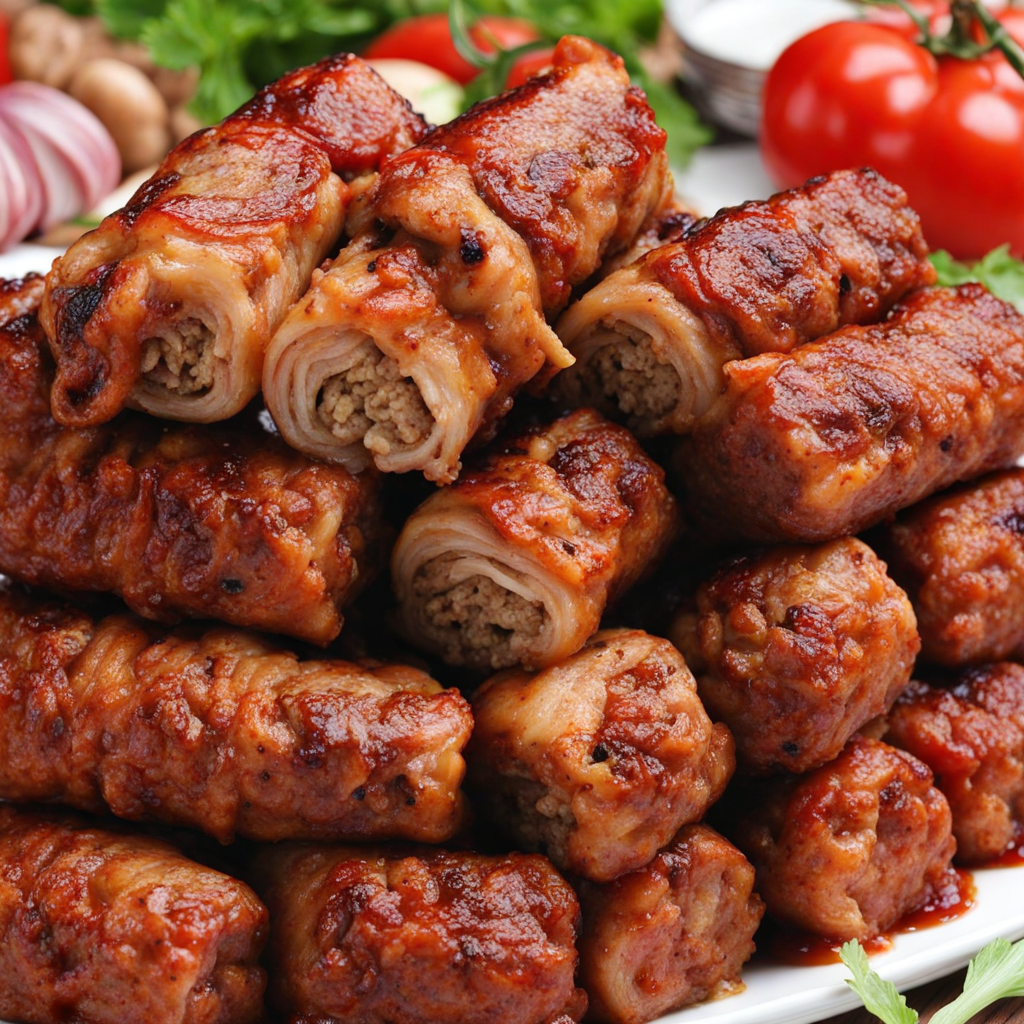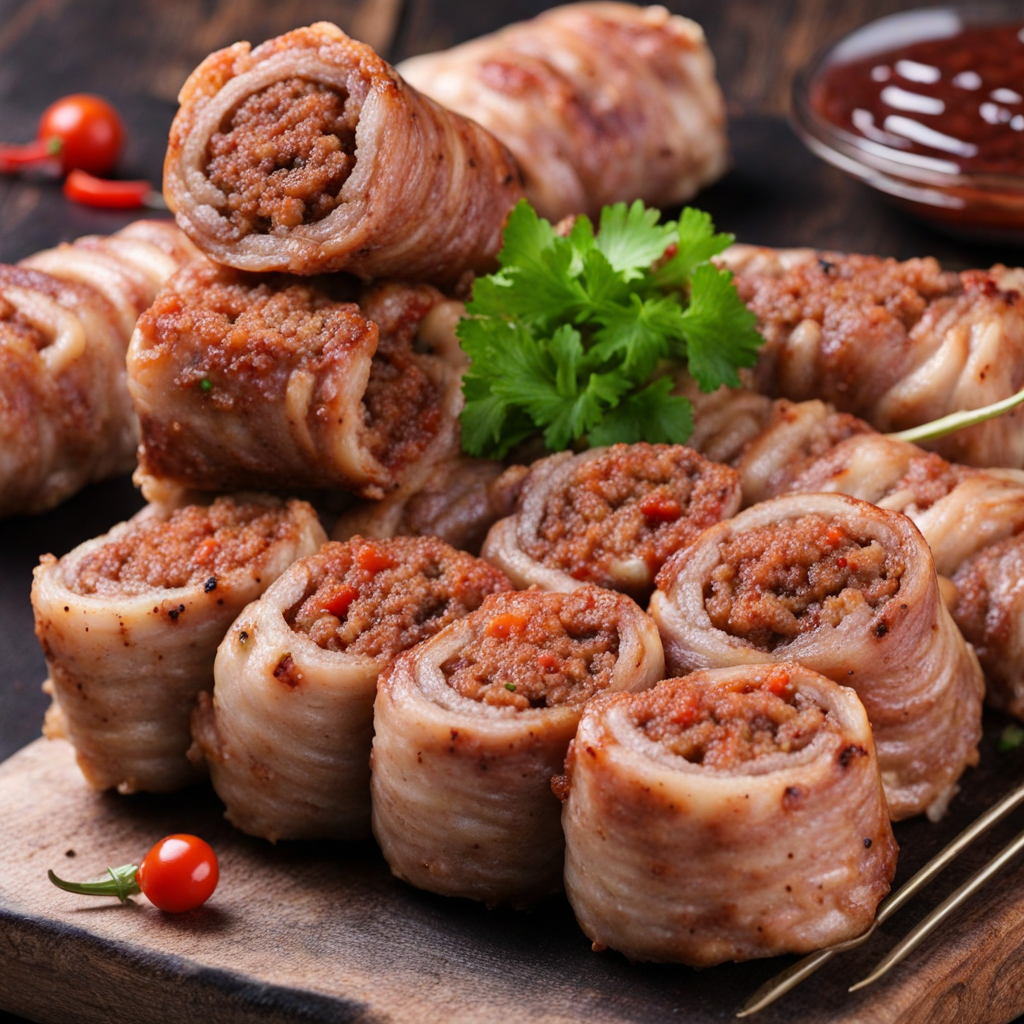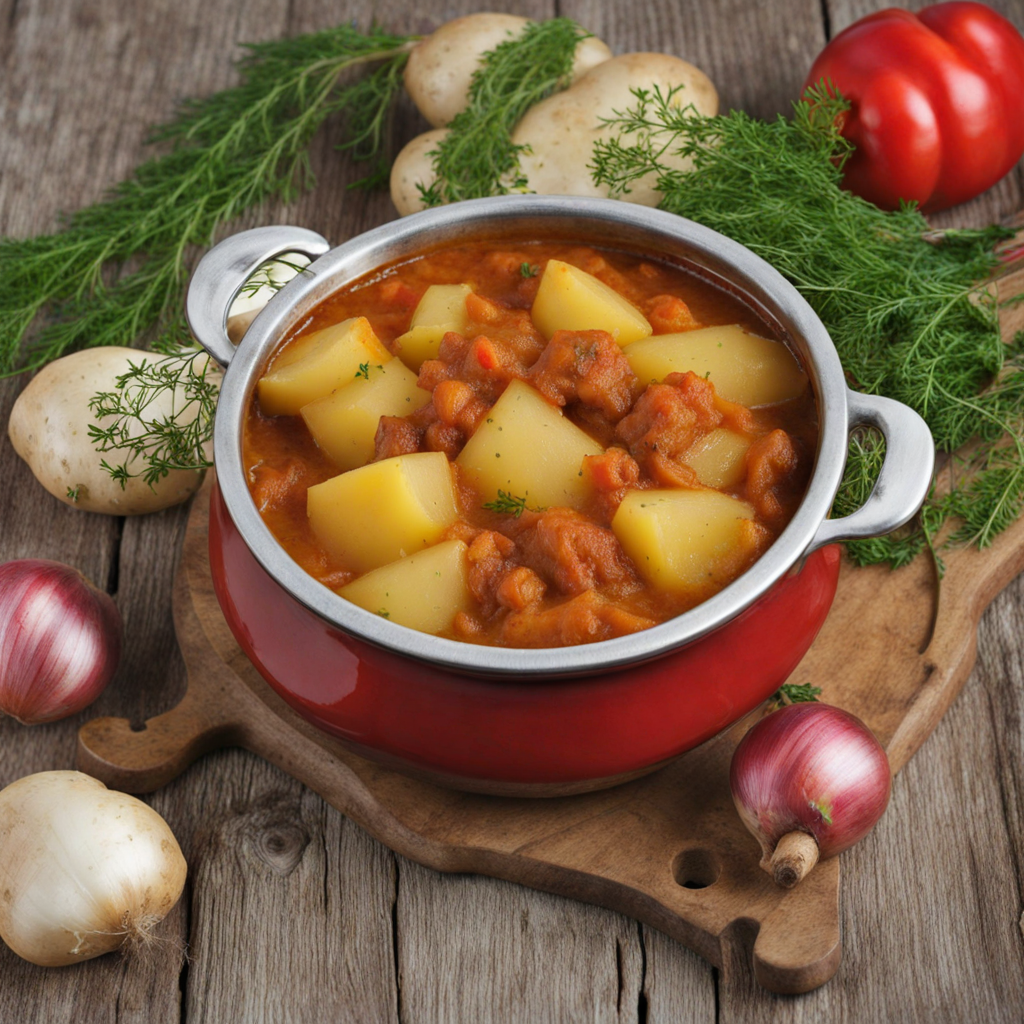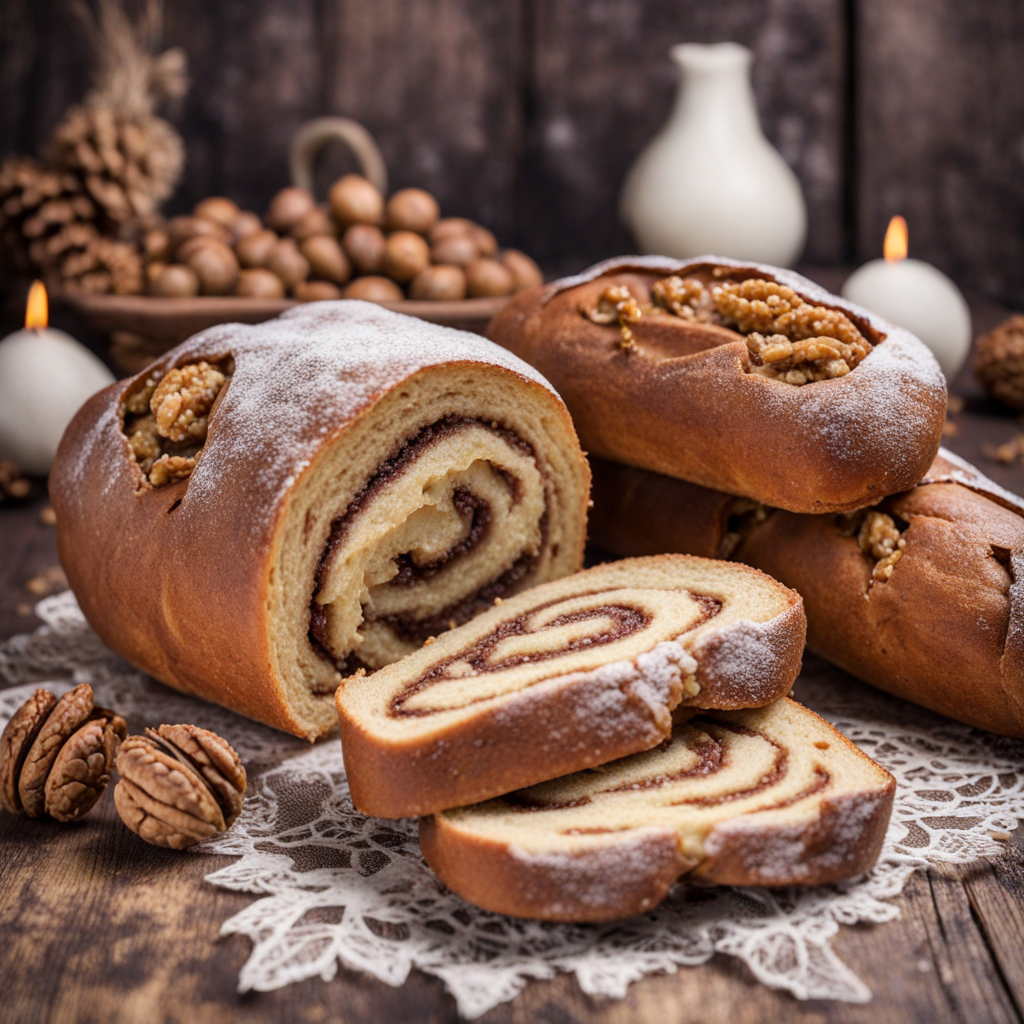Grilled Minced Meat Rolls
Grilled Minced Meat Rolls, known as "Mititei" or "Mici" in Romania, are a beloved traditional dish that embodies the essence of Romanian barbecue culture. These succulent rolls are made from a combination of minced beef, lamb, and pork, seasoned with a vibrant mix of herbs and spices such as garlic, thyme, and black pepper. The mixture is formed into cylindrical shapes, which are then grilled to perfection, resulting in a beautifully charred exterior that locks in the juicy flavors of the meat. The smoky aroma wafting from the grill is irresistible, drawing people in for a taste of this culinary delight. The flavor profile of Mititei is both rich and satisfying, with each bite delivering a burst of savory goodness. The unique blend of meats creates a harmonious balance, while the spices add depth and warmth, making them a comfort food favorite. Traditionally served with a side of fresh bread and a dollop of mustard, these grilled rolls are perfect for gatherings, picnics, or simply a cozy evening meal. The accompanying sides often include pickles and a refreshing salad, providing a delightful contrast to the hearty rolls. As you take your first bite of Grilled Minced Meat Rolls, you’ll experience the tender, juicy meat melded with a slightly crispy exterior, making for a delightful texture. Each roll is a celebration of Romanian culinary tradition, often enjoyed with a cold glass of beer or a glass of țuică, a local plum brandy. Whether you’re sharing them with friends at a summer barbecue or enjoying them at a local eatery, these rolls are a delicious gateway to exploring the rich flavors of Romanian cuisine.
How It Became This Dish
The History of Mititei: A Romanian Culinary Treasure Introduction Mititei, often referred to as "mici" in the plural, are a beloved Romanian dish that captures the essence of the country’s culinary heritage. These small, grilled sausages made primarily from minced beef, lamb, or pork, mixed with spices and garlic, have become a staple at barbecues and festive gatherings throughout Romania. Beyond their delightful taste, mititei carry a rich history and cultural significance that reflects the evolution of Romanian society and its gastronomic traditions. Origins The origins of mititei can be traced back to the late 19th century, although their roots may extend further into the culinary practices of the region. The dish is believed to have been inspired by the Balkan tradition of grilling minced meat, which is a common practice in many Eastern European countries. The word "mititei" itself translates to "the small ones," a fitting description for these diminutive sausages that are enjoyed in a variety of settings. Historical records suggest that the first mentions of mititei appeared in Bucharest around 1850. They were initially served by street vendors and quickly became popular among the working class. The simplicity of the ingredients and the ease of cooking made them accessible to a wide audience. As industrialization progressed, mititei became more than just a street food; they began to be served at restaurants and social gatherings, solidifying their place in Romanian cuisine. Cultural Significance Mititei are more than just a dish; they are a symbol of Romanian identity. They are traditionally associated with outdoor gatherings, festivals, and national holidays, particularly during the summer months. Romanians often enjoy mititei during "grătar" (the Romanian term for barbecue), where friends and family come together to share food, drink, and laughter. The act of grilling mititei becomes a communal experience, embodying the warmth of Romanian hospitality. The dish is also closely tied to Romania's national pride. At various cultural festivals and events, mititei are served as a representation of the country’s culinary prowess. They are often accompanied by a side of mustard, fresh bread, and a cold beer, making for a hearty meal that resonates with locals and visitors alike. Their popularity extends beyond Romania’s borders, with Romanian diaspora communities around the world keeping the tradition alive and introducing mititei to new audiences. Development Over Time As Romania has evolved over the years, so too has the preparation and presentation of mititei. Traditional recipes vary by region, with some areas incorporating different types of meat or unique spices. While the classic recipe consists of a blend of beef and pork, modern variations may include lamb or even chicken, catering to diverse tastes and dietary preferences. The ingredients themselves have seen adaptations over the years. Originally, mititei were seasoned simply with salt, pepper, and garlic. However, contemporary recipes may include additional spices such as thyme, paprika, or even chili flakes, reflecting a growing interest in bold flavors among younger generations. The inclusion of soda water or broth in the meat mixture is also a modern twist that enhances the juiciness and flavor of the sausages. The cooking method for mititei has remained largely unchanged, with grilling being the preferred method to achieve that coveted smoky flavor. In urban areas, where access to traditional outdoor grills may be limited, specialized restaurants and food stalls have emerged, providing the beloved dish in a fast-casual format. These establishments have contributed to a renaissance of mititei, making them a ubiquitous presence at festivals, sporting events, and family gatherings. Mititei in the Global Context While mititei remain a distinctly Romanian dish, their influence and popularity have transcended borders. The growing interest in Eastern European cuisine has led to an appreciation for mititei in various parts of the world. Food festivals and cultural events often feature mititei as a highlight, showcasing the dish’s versatility and appeal. In countries with significant Romanian immigrant populations, such as Italy, Canada, and the United States, mititei have found a place on menus, allowing more people to experience their unique flavor. In recent years, the rise of food tourism has also played a role in elevating mititei's status. Travelers seeking authentic culinary experiences often seek out local specialties, and mititei have become a must-try dish for many visiting Romania. Food bloggers and social media influencers have further amplified the dish’s visibility, sharing enticing images and recipes that celebrate its rustic charm. Conclusion Mititei is more than just a dish; it is a testament to Romania's rich culinary history and cultural heritage. From humble street food to a symbol of national pride, these grilled sausages have evolved over time while retaining their essential character. As Romania continues to modernize and adapt, mititei remain a beloved fixture in both traditional and contemporary dining experiences. As you savor the taste of mititei, you are not just enjoying a meal; you are partaking in a centuries-old tradition that embodies the spirit of Romania. Whether enjoyed at a summer barbecue, a festive gathering, or a quiet family dinner, mititei will always hold a special place in the hearts and palates of Romanians and food lovers around the world. The story of mititei is one of resilience, adaptation, and community—a delicious reminder of the power of food to bring people together across generations.
You may like
Discover local flavors from Romania







